This editorial overview provides an introduction to this special Journal of Sustainability (JSE) issue devoted to water and climate change, which is being released during United Nations World Water Day 2020. The article contextualizes some of the water security risks that are exacerbated by climate change, such as increasing floods and droughts. This piece further provides a brief overview of the articles in the special water and climate issue of the JSE.
Continue Reading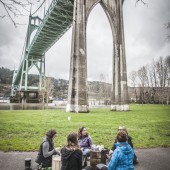
Upstream is an art project that builds connections and circulates stories among people who are linked to teach other through a common watershed. Experiences and memories about water are collected and shared through conversations over tea. Over time, these stories will help build common ground in communities where water can be a divisive issue.
Continue ReadingArt-science intersections are a powerful means to inspire creative thinking in our future scientists, engineers, and citizens, which will allow them to imagine and build a sustainable world. Coupled to active learning and collaboration in science education, art can be a means to evoke deep meaning in abstract concepts such as Planetary Boundaries (PB). Relating PB to an individual’s choices and actions makes these concepts more tangible. As our nation strives to produce more science and engineering majors, we see an emphasis to recruit students to these fields early in their education, but this education does not always inspire creativity or encourage students to use their skills to create a sustainable future. This is particularly true in underrepresented, less privileged populations, where students see a career in science or technology as a means to live a more comfortable life—which can be very resource intensive on our planet. Through our undergraduate research program at Pasadena City College, we translate our research in sustainable materials into lessons to teach underrepresented middle school and high school students about sustainability. Hands-on classroom experiments focused on sustainability and renewable energy drive in-depth discussions relating PB to each student’s actions within their community. Outreach to underrepresented populations has stimulated interest in sustainability and careers in which STEM degrees can be applied to ‘green’ urban areas and make individuals aware of how their choices can impact the environment. Sustainability education is therefore an opportunity to promote diversity in the STEM workforce. Importantly, these outreach efforts have also greatly impacted the community college students who design and carry them out.
Continue Reading
Abstract: As native Midwestern prairie and savannah landscapes continue to be destroyed, some environmentalists are working to reconstruct the prairie and savanna ecosystems that greeted European settlers a century and a half ago. This series of photographs engages those reconstructed landscapes and considers the fundamental question of what we consider natural. As many of these sites are used for educational and scientific purposes, this series also engages how the arts can contribute to our understanding of place.
Continue Reading
As a background for these student responses, I would first like to describe the distinguished program they are a part of at Pasadena City College (PCC). The Early Career Undergraduate Research Experience (eCURe) is a program at PCC that provides students with an undergraduate research experience in the natural or physical sciences at the onset of their scientific careers. This unique experience inspires enthusiasm for scientific research by introducing students to research projects with broader impact in terms of sustainability, energy, the environment and emerging scientific technologies. In this particular eCURe research group led by Dr. Jillian L. Blatti, students have devised methods of synthesizing sustainable paints and testing their resultant properties; they have transposed their tested methods into lesson plans to engage local high schools in scientific outreach efforts, inspiring the next generation of scientists and science educators in sustainability education. As part of this outreach effort, students collaborated with Penn State University’s Nanotechnology Applications and Career Knowledge (NACK) Network in their Remotely Accessible Instruments for Nanotechnology (RAIN) program to bring hands-on experience with advanced analytical equipment to high school students via the Internet, including a scanning electron microscope and atomic force microscope, which they used to analyze sustainable paints they crafted in the classroom. In these highly interdisciplinary and collaborative projects, PCC students are learning to integrate concepts from their science courses into a research-based setting, generating novel questions, designing experiments, analyzing the results, and communicating their science to a broad audience. This innovative community college research program has inspired our students at PCC to continue scientific research in sustainability that they have become passionate about as they transfer to four-year institutions. What follows is accounts of chemical research in sustainability in the chemistry research laboratories at Pasadena City College, the eCURe students’ ‘sense of place’, and how it impacted their views on sustainability research and education.
Continue Reading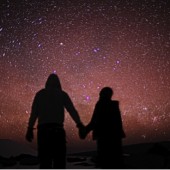
Abstract: This photo essay reflects one sense of place from Mauna Kea.
Continue Reading
Abstract: With the challenge of exploring a particular rural site and responding with installations of type, students investigate the intersection of place, preconception, knowledge, experience and design. With a project named 4 (or 5) letters in a field, student teams participate with the changing conditions of a site and audience to alter the meaning of a place.
Continue Reading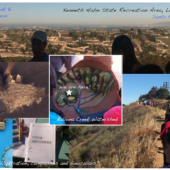
This postcard is inspired by my dissertation research at the Kenneth Hahn State Recreation Area and Ballona Wetlands in Los Angeles. I spent many months observing student tours and frequently was struck by many of the reactions and observations I mentioned in my postcard.
Continue Reading
This “post card” reflects on the “senders” experiences of playing in nature during her childhood, her return to that same community with children of her own, observations about changing patterns of children’s free-play in nature, and the inspiration for and experiences of creating a family nature club to help families in her community connect with their social and ecological communities.
Continue Reading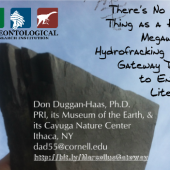
Prezi presentation on overall energy picture in the U.S. and the role of hydrofracking with special focus on the Marcellus Shale
Continue Reading
Ecology Project International (EPI) is a non-profit organization dedicated to developing place-based, ecological education partnerships between local experts and high school students to address critical conservation issues. This photo essay depicts local students in action at EPI’s programs in Baja California Sur – Mexico, the Galapagos Islands – Ecuador, and the Greater Yellowstone Ecosystem. The photos show students engaging in field science, applied conservation, and sustainability-related activities geared toward helping them develop environmental literacy.
Continue Reading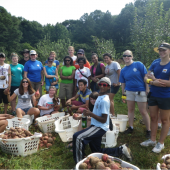
These twenty high school students were part of the first Conservation Leadership in Action Week, an experiential conservation camp hosted by the Tennessee Aquarium and Baylor School in Chattanooga, TN. These ambitious teenagers spent the week discovering conservation challenges, including urban water quality, biodiversity of Tennessee rivers and streams, and how day-to-day actions impact our environment. Sustainable Food Day was a big hit, as students spent the morning on a local farm picking beets. With the help of a local chef, students cooked these beets for dinner that evening. For many, it was the first time they were responsible for their food from farm to table.
Continue Reading
In Learning Gardens and Sustainability Education: Bringing Life to Schools and Schools to Life, Williams and Brown (2011) place living soil at the center of the discourse on sustainability education. One of the seven principles that guides their pedagogy of learning gardens is: valuing biocultural diversity. This photo-essay of elementary students in K-8 schools, explores how 4 inches of soil in the learning gardens can teach about life’s diversity. The author urges humble attentiveness to that which is below our feet seemingly hidden and unnoticed yet teeming with life.
Continue Reading